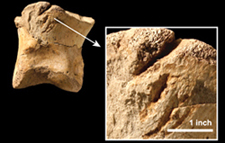A Tailored Pair of Genes
*For ancient plants, two genes were definitely better than one*
In the wake of the disaster that killed the dinosaurs, the ancestors of today’s crop plants reinvented themselves.
They doubled their genomes, and in that single act set the stage for feeding the world 60 million years later.
In a study published in the Nov. 16 issue of the journal Nature, researchers from the University of Minnesota and other institutions recount how sequencing the genome of a model, alfalfa-like legume revealed the monumental benefits that flowed when the ancestor of legumes acquired an extra copy of every gene. (more…)

